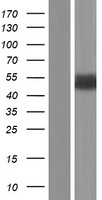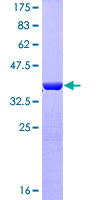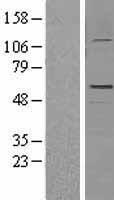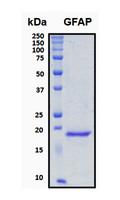Login
Registration enables users to use special features of this website, such as past
order histories, retained contact details for faster checkout, review submissions, and special promotions.
order histories, retained contact details for faster checkout, review submissions, and special promotions.
Forgot password?
Registration enables users to use special features of this website, such as past
order histories, retained contact details for faster checkout, review submissions, and special promotions.
order histories, retained contact details for faster checkout, review submissions, and special promotions.
Quick Order
Products
Antibodies
ELISA and Assay Kits
Research Areas
Infectious Disease
Resources
Purchasing
Reference Material
Contact Us
Location
Corporate Headquarters
Vector Laboratories, Inc.
6737 Mowry Ave
Newark, CA 94560
United States
Telephone Numbers
Customer Service: (800) 227-6666 / (650) 697-3600
Contact Us
Additional Contact Details
Login
Registration enables users to use special features of this website, such as past
order histories, retained contact details for faster checkout, review submissions, and special promotions.
order histories, retained contact details for faster checkout, review submissions, and special promotions.
Forgot password?
Registration enables users to use special features of this website, such as past
order histories, retained contact details for faster checkout, review submissions, and special promotions.
order histories, retained contact details for faster checkout, review submissions, and special promotions.
Quick Order
GFAP
glial fibrillary acidic protein
GFAP, a class-III intermediate filament, is a cell-specific marker that, during the development of the central nervous system, distinguishes astrocytes from other glial cells.
| Gene Name: | glial fibrillary acidic protein |
| Synonyms: | GFAP |
| Target Sequences: | NM_002055 NP_002046.1 P14136 |
Publications (18)
1
Localization of the glial fibrillary acidic protein in astrocytes by immunofluorescence. Bignami A, Eng LF, Dahl D, Uyeda CT. Brain research. 1972 43:429-35.
[PubMed:4559710]
2
Mutations in GFAP, encoding glial fibrillary acidic protein, are associated with Alexander disease. Brenner M, Johnson AB, Boespflug-Tanguy O, Rodriguez D, Goldman JE, Messing A. Nature genetics. 2001 27:117-20.
[PubMed:11138011]
3
Expression of dystroglycan, fukutin and POMGnT1 during mouse cerebellar development. Henion TR, Qu Q, Smith FI. Brain research. Molecular brain research. 2003 112:177-81.
[PubMed:12670716]
☰ Filters
Products
Proteins
(22)
Type
Over-Expression Lysate
(4)
Recombinant
(18)
Target
GFAP
(22)
Publications
No
(22)
Tag
10His-SUMO, N-terminus + Myc, C-terminus
(1)
6His, N-terminus
(3)
GST
(1)
GST, N-terminus
(1)
His
(1)
His, N-Terminal
(3)
His-GST
(2)
His-S
(2)
His-SUMO
(1)
His-T7
(2)
Myc-DDK (Flag)
(5)
Species
Human
(11)
Mouse
(6)
Rat
(2)
Zebrafish
(1)
Source
293T Cells
(2)
E. coli
(14)
HEK 293 Cells
(3)
Wheat Germ Extract
(2)
Yeast
(1)
Purification
Purified
(6)
Low Endotoxin Level
Low endotoxin level
(3)

Yeast
6His, N-terminus
100 µg/$499; 20 µg/$364; 1 mg/$1,683
E. coli
431 AA
His
Less than 0.1 EU/µg protein (determined by LAL method).
47.52 kDa
10 mg/$4,268; 5 mg/$3,201; 1 mg/$1,868; 0.5 mg/$1,475; 200 µg/$1,103; 100 µg/$756; 50 µg/$531

293T Cells
Myc-DDK (Flag)
49.7 kDa
20 µg/$150

E. coli
His-S
17.5 kDa
10 µg/$267; 50 µg/$352; 100 µg/$562; 200 µg/$702; 1 mg/$1,723; 500 µg/$1,298; 5 mg/$2,673; 2 mg/$1,900

HEK 293 Cells
Myc-DDK (Flag)
49.7 kDa
20 µg/$1,107

E. coli
His-T7
53.6 kDa
10 µg/$267; 50 µg/$352; 100 µg/$562; 200 µg/$702; 1 mg/$1,723; 500 µg/$1,298; 5 mg/$2,673; 2 mg/$1,900

E. coli
His-T7
39.7 kDa
10 µg/$265; 50 µg/$347; 100 µg/$545; 200 µg/$682; 1 mg/$1,690; 500 µg/$1,270; 5 mg/$2,637; 2 mg/$1,866

E. coli
10His-SUMO, N-terminus + Myc, C-terminus
20 µg/$405; 1 mg/$1,679; 100 µg/$598
E. coli
His-SUMO
65.9 kD
1 mg/$1,679; 100 µg/$500; 20 µg/$364

Wheat Germ Extract
GST, N-terminus
10 µg/$479; 25 µg/$670

293T Cells
Myc-DDK (Flag)
49.3 kDa
20 µg/$150

Wheat Germ Extract
GST
76.3 kDa
10 µg/$479; 25 µg/$670

E. coli
His-S
20.0 kDa
10 µg/$267; 50 µg/$352; 100 µg/$562; 200 µg/$702; 1 mg/$1,723; 500 µg/$1,298; 5 mg/$2,673; 2 mg/$1,900

HEK 293 Cells
Myc-DDK (Flag)
49.3 kDa
100 µg/$494

E. coli
His, N-Terminal
24.7kDa
10 µg/$267; 50 µg/$352; 200 µg/$702; 100 µg/$562; 1 mg/$1,723; 500 µg/$1,298; 5 mg/$2,673; 2 mg/$1,900

HEK 293 Cells
Myc-DDK (Flag)
49.7 kDa
100 µg/$494

E. coli
His, N-Terminal
13.4kDa
10 µg/$267; 50 µg/$352; 200 µg/$702; 100 µg/$562; 1 mg/$1,723; 500 µg/$1,298; 5 mg/$2,673; 2 mg/$1,900

E. coli
His-GST
44.8 kDa
10 µg/$265; 50 µg/$347; 100 µg/$545; 200 µg/$682; 1 mg/$1,690; 500 µg/$1,270; 5 mg/$2,637; 2 mg/$1,866

E. coli
His-GST
44.5 kDa
10 µg/$265; 50 µg/$347; 100 µg/$545; 200 µg/$682; 1 mg/$1,690; 500 µg/$1,270; 5 mg/$2,637; 2 mg/$1,866

E. coli
His, N-Terminal
17 kDa
10 µg/$265; 100 µg/$365; 50 µg/$315; 200 µg/$485
E. coli
6His, N-terminus
Less than 1.0 EU/µg protein (determined by LAL method).
18.7 kDa
10 µg/$317
E. coli
6His, N-terminus
Less than 1.0 EU/µg protein (determined by LAL method).
18.7kD
10 µg/$316
Viewing 1-22
of 22
product results
If you do not find the reagent or information you require, please contact Customer.Support@LSBio.com to inquire about additional products in development.










